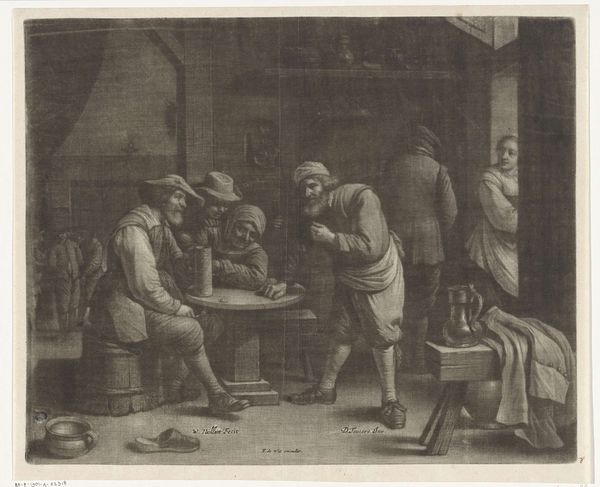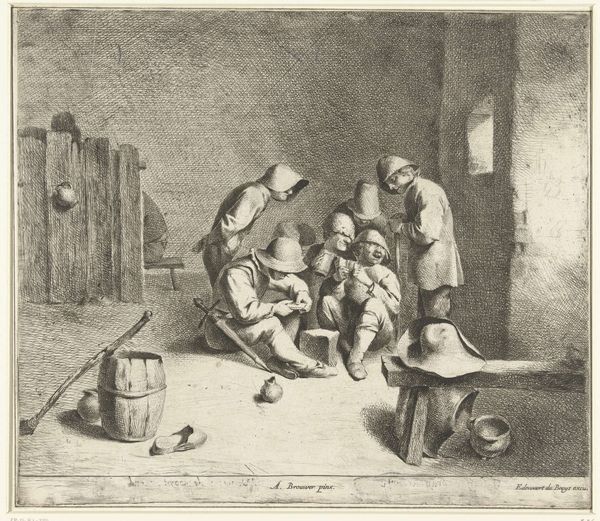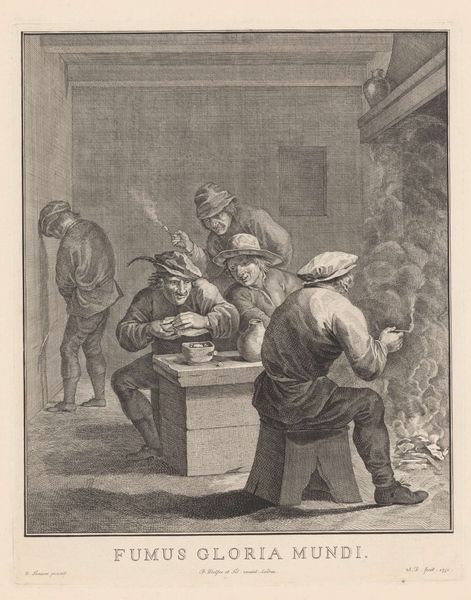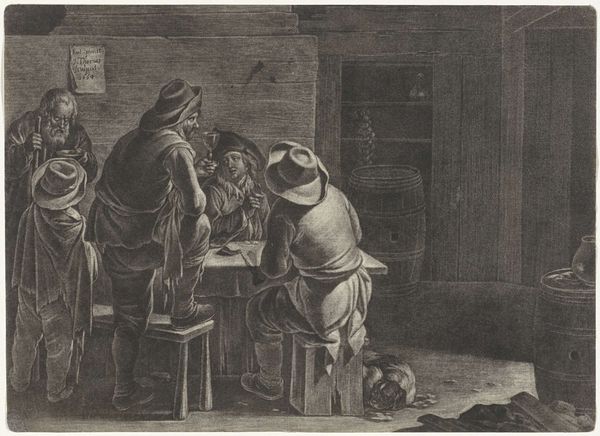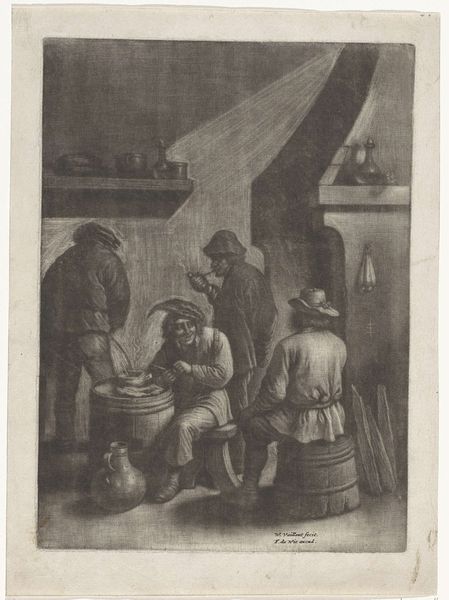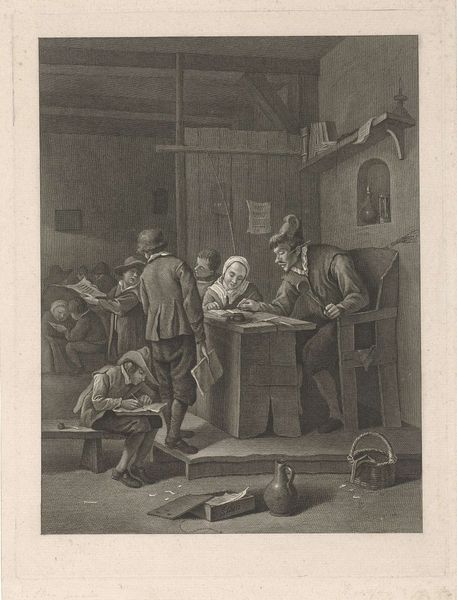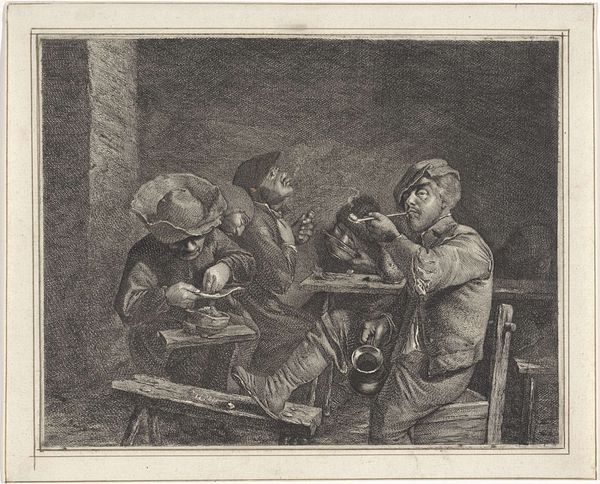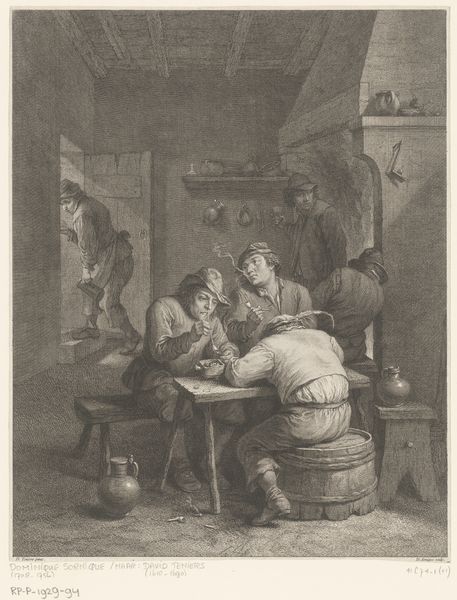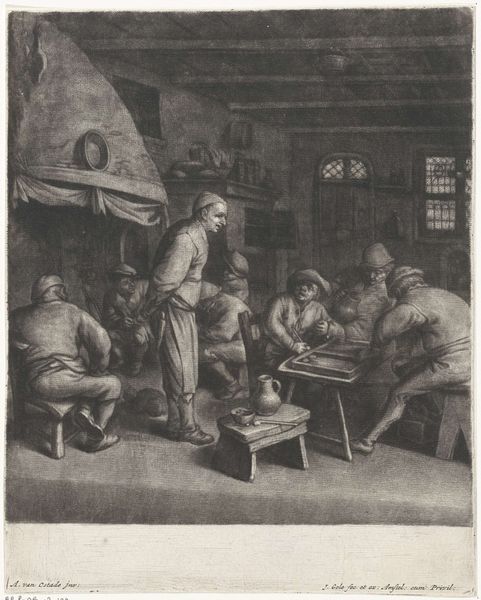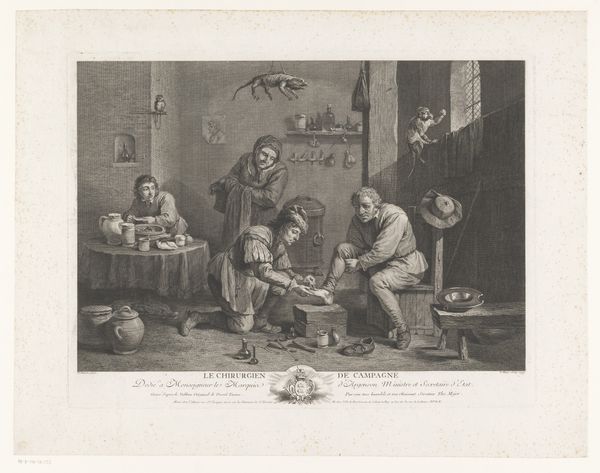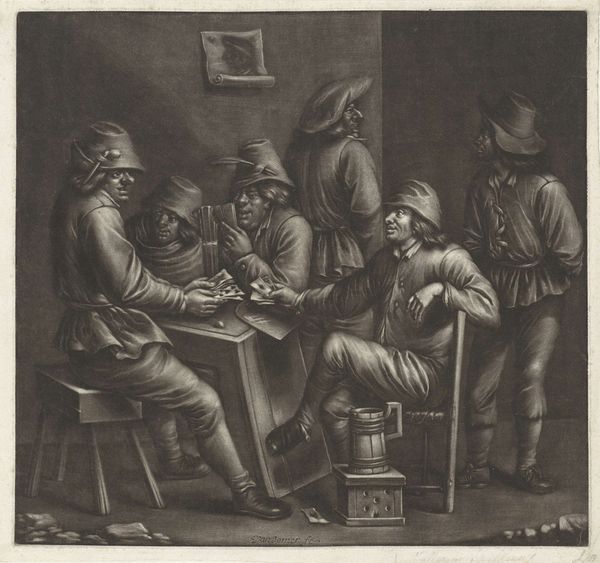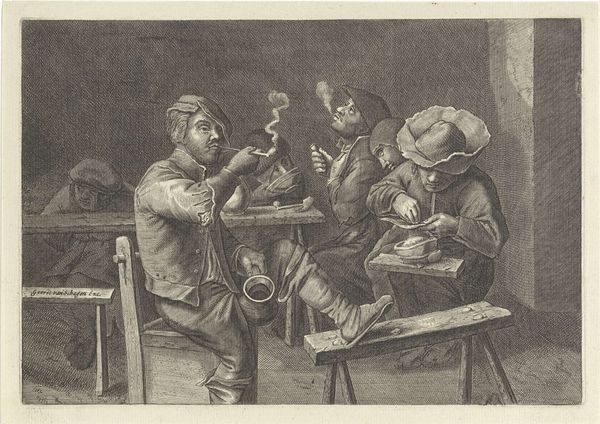
drawing, etching, ink, engraving
#
portrait
#
drawing
#
dutch-golden-age
#
etching
#
dog
#
charcoal drawing
#
figuration
#
ink
#
pencil drawing
#
portrait drawing
#
genre-painting
#
engraving
Dimensions: height 314 mm, width 393 mm
Copyright: Rijks Museum: Open Domain
Curator: Here we have "Herberg met triktrakspelers," which translates to "Inn with backgammon players," dating sometime between 1658 and 1677 and attributed to Wallerant Vaillant. You can find it here at the Rijksmuseum. What strikes you most about this image? Editor: It feels quite intimate despite being a public scene. There's a close huddle around the backgammon table, rendered in what appears to be a remarkably soft etching technique. I'm immediately drawn to the texture and materiality suggested by the scene, down to the sleepy dog at their feet. Curator: Exactly. The choice of engraving is crucial here. Etchings, especially during the Dutch Golden Age, played a key role in circulating imagery, shaping public opinion and social values. These tavern scenes became emblematic of daily life. Editor: And look at the labour embedded within this one engraving. The time and skill involved in translating such detail onto the copper plate. It makes me wonder about the accessibility of these images; who owned them, who consumed them, and what was their status? Curator: Excellent points. Consider, too, that genre paintings such as this were increasingly popular. They mirrored the burgeoning merchant class's interest in representing and understanding their own lives and pastimes. It created a visual discourse about class and morality. Editor: Absolutely, and while the composition is seemingly simple, focusing on these players, there's a complex narrative implied through the objects – the earthenware jug, the clothing draped over the chair. Are these indicators of prosperity, of leisurely activities only accessible to some? Curator: Indeed. The inn itself functioned as a social hub, but access and acceptance were hardly universal. Works such as this reinforce the idea of "the social" as a performance of identity, visible even in what may appear as casual gatherings. Editor: So, it's much more than just a quaint scene. This work encapsulates production, materiality, representation, even exclusion. Curator: Precisely. By analyzing not only the "what" but the "how" and "why" of the etching process, we see its impact on Dutch society and the way people understood their world. Editor: A fascinating lens through which to appreciate the social impact inherent within seemingly simple genre scenes, like this cozy depiction of backgammon at an inn. Curator: A window into the intersection of leisure, labor, and social status in the Dutch Golden Age!
Comments
No comments
Be the first to comment and join the conversation on the ultimate creative platform.
